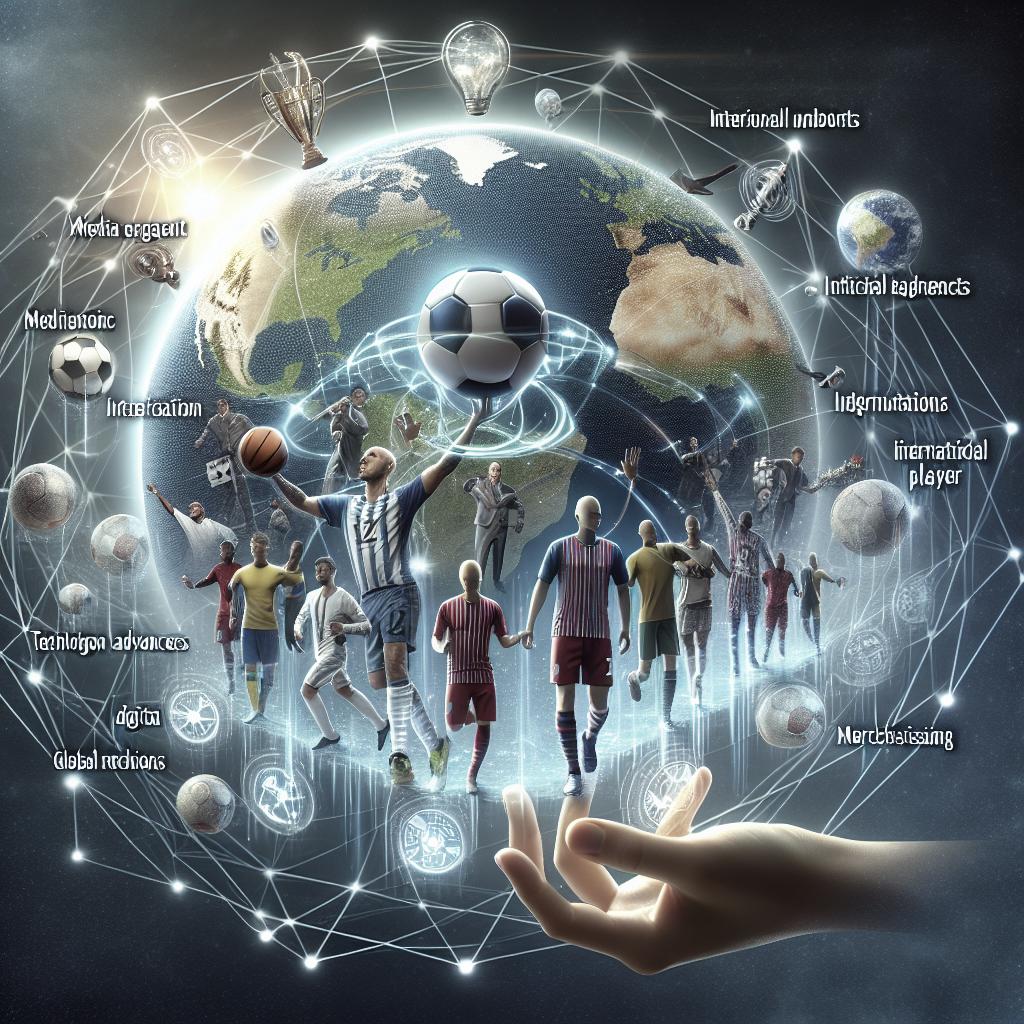“`html
Introduction
In the modern global landscape, the influence of globalization extends far beyond economic and political arenas, reaching deeply into the realm of sports. This blog post explores the multifaceted impact of globalization on local sports teams. It dissects both the positive ramifications, such as enhanced exposure and increased investment, as well as the challenges, including commercialization and identity threats. By examining these factors through specific case studies—such as football in Africa and traditional martial arts in Asia—we gain a holistic understanding of how global interconnectivity is reshaping local sports dynamics.
Positive Impacts
Increased Exposure and Participation
One of the significant benefits globalization has bestowed upon local sports teams is heightened exposure on international platforms. The digital age allows games to be broadcasted globally, leading to an increase in viewership and fan bases that know no geographical boundaries. This global outreach enhances the sport’s popularity and drives participation at grassroots levels.
Moreover, as local athletes gain international attention, they receive opportunities to compete globally, leading to skill enhancement and personal growth. The fame and visibility of their sports heroes inspire young athletes to pursue their dreams, pushing local talent into the global spotlight.
Enhanced Infrastructure and Investment
Globalization has opened up new investment channels for local sports teams. International sponsors and investors are now more inclined to fund local teams, providing essential capital for facilities, training programs, and general infrastructure improvements. This influx of funds often leads to more sophisticated training environments and better-equipped stadiums.
Furthermore, governmental and non-governmental organizations are urged to invest in sports as a means of promoting cultural diplomacy and soft power. This financial support reflects in the improved competitiveness of local teams, enabling them to attract better talent and improve performance standards.
Cultural Exchange and Diversity
The cross-border movement of coaches, players, and support staff through globalization fosters a vibrant cultural exchange, introducing innovative playing tactics and diverse perspectives. This interchange enriches the playing style and strategies of local teams, offering them a unique blend of cultural tactics and techniques.
Additionally, the sports community celebrates diversity, with local teams embracing players from different backgrounds. Such inclusivity promotes mutual respect and understanding, transcending beyond the field and fostering a broader societal harmony.
Negative Impacts
Commercialization and Corporatization
While globalization brings investment, it often comes with the strings of commercialization and corporatization that can undermine the essence of sportsmanship. The focus sometimes shifts to profit-making, sidelining the community values that local sports were originally built on.
There is a risk that sports events turn into mere commercial spectacles, prioritizing entertainment and monetary gains over the integrity and true spirit of the sport. This can sometimes lead to the exploitation of players, where profit margins precede players’ well-being and development.
Threat to Local Identity
The global influx may dilute the cultural identity of local sports teams. As external influences permeate, traditional styles and homegrown talents could be overshadowed by international methods and prominent foreign athletes.
Local fans might find it challenging to relate to teams that increasingly embody a global character rather than a local soul. This loss of identity risks alienating indigenous fan bases, ultimately impacting the community’s attachment and support levels.
Inequality and Access Issues
Increased globalization can inadvertently widen the gap between elite and grassroots levels of sport. The influx of international capital is often unevenly distributed, leaving behind smaller clubs and organizations that already struggle with resources.
Furthermore, as sports become more global, accessibility issues arise due to rising costs associated with watching and participating in high-level sporting events. This translates to limited access for underprivileged communities, who might see these sports as unaffordable or unapproachable.
Case Studies
Case Study 1: Football in Africa
The global appeal of football has immensely impacted African football, providing its local teams with unprecedented opportunities to shine on the world stage. African players’ success stories in European leagues have lifted the continent’s football profile, increasing sponsorship and investment back home.
However, this globalization also raises challenges, such as the export of talented young players, which can weaken local leagues. Moreover, foreign ownership of clubs can shift priorities away from local development, focusing instead on maximizing profits and returns.
Case Study 2: Traditional Martial Arts in Asia
In Asia, traditional martial arts like Karate, Taekwondo, and Kung Fu have gained international acclaim, vastly increasing their practice and appreciation worldwide. Globalization has led to standardized training methods and the internationalization of tournaments, attracting multicultural participants.
On the downside, as these traditional sports integrate into global frameworks, they risk losing unique cultural elements integral to their identity. The commercialization aspect, primarily through global franchises and academies, might overshadow the traditional philosophies that these arts promote.
Final Thoughts
The globalization of local sports teams represents a double-edged sword, bringing along prospects and challenges. While it allows local teams to bask in global limelight, fostering growth and cultural exchange, it also presents threats of commercial exploitation and identity dilution. As examined in the case studies of football in Africa and martial arts in Asia, the implications are profound and varied.
The future of local sports in the global arena will hinge on balancing these influences, ensuring that growth does not come at the cost of losing cultural essence or undermining community engagement. For stakeholders, it’s crucial to harness globalization in a way that uplifts local talent, fosters inclusivity, and retains the soul of sports as a binding force of community and culture.
Summary Table
| Aspect | Positive Impact | Negative Impact |
|---|---|---|
| Exposure | Increased global visibility and participation | Potential loss of traditional audience |
| Investment | Enhanced infrastructure and professional growth | Unequal distribution leading to inequalities |
| Culture | Rich cultural exchange and increased diversity | Threat to local identity and traditions |
| Commercialization | Funding and sponsorship growth | Overemphasis on profit, erosion of values |
“`


